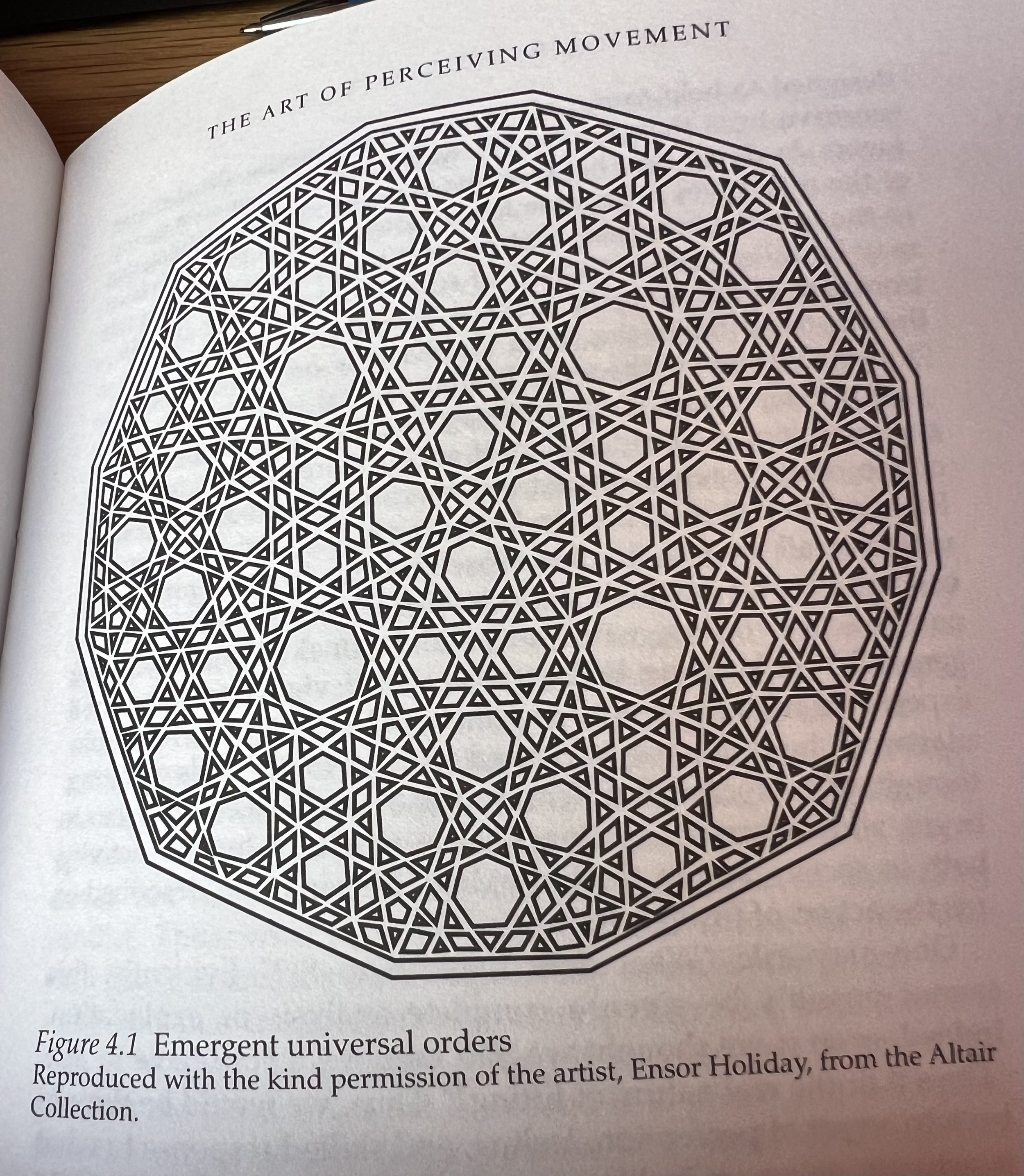“It is perhaps helpful here to note that the root of the word "organize" is related to the Greek "ergon," which is based on a verb meaning "to work," and that this verb is also the root of the word "energy," which thus means literally "to work within." If we think of the movement of life as an "organizing energy" that is "working within" the movements in the organs, in the cells, and, indeed, even in the atoms and elementary particles and thus ultimately merging with the universal field movement, this would perhaps help further in giving a feeling for what it means to take movement as primary.
The activity of this organizing energy is then what leads to the growth and sustenance of life in each organism, and to the evolution of ever-new forms of organism. When an organism dies, the movement of its "organizing energy" ceases, so that it dissolves ultimately into inorganic ("unorganized") matter: In earlier times, the prevailing world view was that there is a spiritual substance (a soul) which "does the organizing" and which departs when the organism dies. But now we can take it that the essence of life is the movement of organizing energy, and we do not think of a special "soul substance" that would produce or carry this energy.
By considering the primary significance of movement in this general sense, which includes art, inward experience at the psychological level, and what is to be meant by life, we can perhaps indicate at least the germ of a different world view, which can function to call attention to our outward perceptions and inward feelings in a new way, so that we can be free of the habitual and automatic function of the traditional view that this movement is meaningless, without some thing that is "doing the moving."“
“On Creativity” (1998), David Bohm, ed by David Nichol, Routledge. p 79-80
“It has to be emphasized that universal ratio is not merely or even mainly a statement of what is common to all, that is, of general similarity. Rather, it is an ordered structure of differences or divisions, which are all related, and whose relationships are seen as forming the particular or the individual.
One can usefully indicate what is meant here with the aid of a work of art [see Figure 4.1]. In this design, which is based on a Moorish arabesque, one can see many orders emerging in the form of lines that extend across the whole pattern. These orders may be considered to play the role of the universal. Particular geometrical objects, such as triangles, quadrilaterals, and hexagons, are then formed or created in the intersection of the universal orders. Thus, it is evident that the universal is not to be regarded as just a set of properties (e.g. shape) that is common to all the particular geometrical objects.
“On Creativity” (1998), David Bohm, ed by David Nichol, Routledge. p 84 and 85 (image below)
So…
An organising energy which is working within - at the micro level — in cells, atoms, elementary particles and ultimately “merging with the universal field movement”.
It is this organising energy which leads to the growth and sustenance of life in each organism, and to the evolution of ever new forms of organism.”
Form is Emptiness, Emptiness is Form. Form is movement, movement is form. Form is Movement is Evolution/Emergence.
